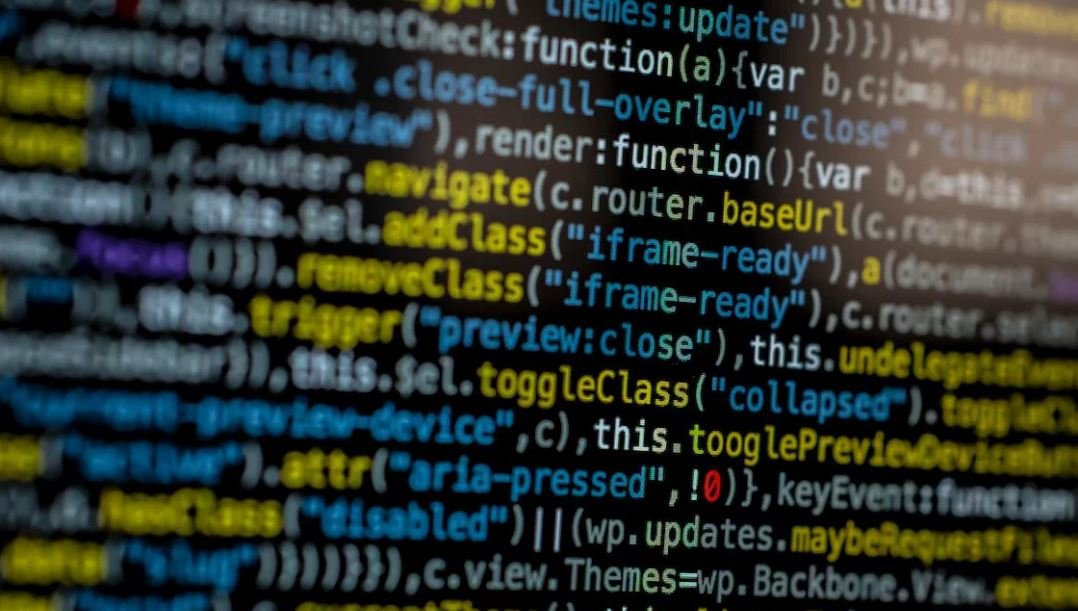Is Deepfake Safe?
Deepfake technology has gained significant attention in recent years due to its ability to create highly realistic fake videos or images using artificial intelligence. However, the rise of deepfakes has raised concerns about the potential negative implications and safety risks associated with this technology. This article explores the safety aspects of deepfakes and provides insights into their potential impact on various domains.
Key Takeaways:
- Deepfakes can deceive people by generating highly realistic fake content.
- The malicious use of deepfakes can lead to reputational damage, misinformation, and fraud.
- Increased awareness, detection mechanisms, and legislation are essential to address the risks of deepfakes.
- Deepfake technology also has positive applications such as entertainment and creative expression.
- Developing robust tools and educating the public can help mitigate the potential harm caused by deepfakes.
Understanding Deepfake Safety
Deepfakes have the potential to cause significant harm and disrupt various aspects of society. **They blur the line between reality and fiction and can manipulate public opinion or tarnish the reputation of individuals or organizations**. Although there are positive use cases, the misuse of deepfakes poses serious safety risks that need to be addressed. For instance, deepfake videos can be used to spread misinformation, manipulate elections, or even facilitate identity theft.
**It is crucial to understand that deepfake technology is advancing rapidly**. As research progresses and new techniques are developed, the creation of deepfakes becomes more accessible to individuals with malicious intent. This creates a challenging landscape where protecting against deepfakes requires continuous adaptation and improved detection techniques.
The Impact of Deepfakes
Deepfakes have the potential to impact different domains, including politics, journalism, and entertainment. Here are some notable examples:
1. Politics
| Risks | Implications |
|---|---|
| Manipulation of political perceptions | Can sow confusion and influence election outcomes. |
| Creation of fake news | Increases the risk of false information spreading rapidly. |
2. Journalism
| Risks | Implications |
|---|---|
| Erosion of trust in media | Can make it difficult for the public to differentiate between real and fake news. |
| Disinformation campaigns | Undermines the credibility of legitimate journalism. |
3. Entertainment
| Risks | Implications |
|---|---|
| Unconsented use of celebrity likeness | Raise legal and ethical questions regarding privacy and consent. |
| False attribution | Can result in misrepresentation and unintended consequences. |
**Deepfakes can have tangible effects on society, and it is essential to recognize their potential to cause harm**. Proactive measures are necessary to keep pace with the rapidly evolving deepfake landscape.
Addressing Deepfake Risks
To mitigate the risks associated with deepfakes, several approaches can be adopted:
- Develop advanced detection technology to identify deepfakes accurately.
- Implement awareness campaigns to educate the public about deepfakes and their potential dangers.
- Establish legislation and regulations to address the malicious use of deepfakes.
- Collaborate with technology companies to integrate deepfake detection tools into social media platforms.
- Encourage responsible use of deepfakes for positive applications such as entertainment and creative expression.
Conclusion
Deepfakes pose significant safety risks, and their increasing sophistication calls for immediate attention. **Ongoing research, public awareness, enhanced detection methods, and legislative measures are crucial in managing and minimizing the potential harm associated with deepfake technology**.

Common Misconceptions
Deepfakes are easy to spot
One common misconception about deepfakes is that they are easy to spot or detect. However, with advancements in machine learning and artificial intelligence, deepfake technology has become more sophisticated and realistic. This makes it increasingly difficult for the average person to identify deepfake content.
- Deepfakes can replicate the person’s facial expressions and movements accurately, making it hard to detect any inconsistencies.
- Audio manipulation accompanying deepfakes can further enhance their believability.
- The use of deepfake algorithms can continuously improve the quality of the generated content, making it even harder to distinguish from real footage.
Deepfakes are only used for malicious purposes
An often misunderstood notion is that deepfakes are exclusively used for malicious activities, such as spreading disinformation or creating fake celebrity pornographic videos. While these harmful uses do exist, it is essential to recognize that deepfake technology has other potential applications as well.
- Deepfakes can be employed in the entertainment industry to enhance visual effects and create more realistic characters.
- They can also be utilized in video game development to generate lifelike animations and facial expressions.
- Researchers and educators can harness deepfake technology to recreate historical figures or simulate real-world scenarios to better engage audiences.
Deepfakes are only a threat to individuals
Another misconception is that deepfakes are primarily a threat to individuals, such as celebrities or politicians, who may be targeted for reputational damage. While individuals are indeed at risk, the consequences of deepfakes extend far beyond personal harm.
- Deepfakes can be used for political manipulation, allowing false information to be disseminated quickly and influencing public opinion.
- They can fuel social unrest by fabricating evidence or spreading fake news.
- Businesses and organizations can also be targeted, leading to financial losses or damage to their reputation if deepfakes are used in malicious ways.
Only experts can create deepfakes
Contrary to popular belief, creating deepfakes does not require advanced technical skills or extensive expertise. With the availability of user-friendly deepfake software and online tutorials, almost anyone can generate deepfake content.
- The accessibility of deepfake tools and platforms empowers malicious individuals to create convincing but damaging content easily.
- Misinformation can be spread by individuals with limited technical knowledge, contributing to the widespread proliferation of deepfakes.
- The simplicity of creating deepfakes raises concerns about the need for stricter regulations and societal awareness of the potential risks they pose.
Deepfakes are here to stay
Another misconception is that deepfake technology is a passing trend that will diminish over time. However, experts predict that deepfakes are likely to become even more prevalent in the future.
- Advancements in machine learning and artificial intelligence will continue to improve the quality and believability of deepfake content.
- The accessibility of deepfake technology will likely increase, making it easier for individuals with malicious intent to create convincing fakes.
- As deepfake detection techniques advance, so will the sophistication of the technology, leading to an ongoing cat-and-mouse game between creators and detectors.

Table: Top 10 Deepfake Applications
As deepfake technology evolves, its applications have become increasingly diverse and impactful. This table highlights the top 10 usage areas for deepfake technology, showcasing its potential and raising awareness about its capabilities.
| Application | Description |
|————-|————-|
| Entertainment | Deepfake allows for the creation of realistic and engaging fictional scenarios in movies, television shows, and online videos. |
| Sports | Athletes can be merged into historical footage, enabling fans to witness iconic moments with their favorite players. |
| Journalism | Deepfake can be employed as a tool to recreate events and interviews, enhancing storytelling in news and media. |
| Education | Simulated teaching scenarios using deepfake can provide lifelike learning experiences for students. |
| Politics | Politicians and world leaders can be animated to deliver speeches or engage in debates, offering alternate perspectives and analysis. |
| Advertising | Deepfake offers the possibility of creating hyper-realistic advertisements, making products more enticing to consumers. |
| Gaming | Gamers can immerse themselves in more realistic virtual worlds, with characters indistinguishable from real people. |
| Art | Artists can create mind-bending and transformative artworks using deepfake techniques, pushing the boundaries of creativity. |
| Psychology | Deepfake avatars can assist therapists in simulations of therapeutic situations, helping patients overcome challenges. |
| Historical Preservation | Using deepfake, historical figures can be brought back to life, telling their stories in a compelling and interactive way. |
Table: Deepfakes vs. Authentic Videos
Being able to discern deepfake content from authentic videos is vital in today’s digital landscape. This table provides key characteristics for distinguishing deepfakes from genuine visual media.
| Characteristic | Deepfake | Authentic Video |
|—————-|———-|—————-|
| Facial Expression | Shows exaggerated or unnatural expressions that are often hard to replicate convincingly. | Displays a range of emotions that reflect genuine human reactions. |
| Eye Movement | Eye movements may lack synchronization or appear disjointed. | Eyes move smoothly and in coordination with facial expressions. |
| Blinking | Rare blinking or irregular blinking patterns during longer time frames. | Normal blinking patterns consistent with human behavior. |
| Lighting and Shadows | Inconsistent lighting, shadows, or reflections on the face. | Lighting and shadows appropriately align, maintaining consistency throughout the video. |
| Audio Quality | Audio may have distortions or inconsistencies in quality, volume, or background noise. | Sound quality is clear and natural, synchronized with the speaker’s movements. |
| Synthetic Artifacts | Visual glitches, unrealistic textures, or imperfections visible around the face or objects. | Realistic textures and details without noticeable distortions or visual quirks. |
| Background | Background elements may show anomalies or inconsistencies in perspective, lighting, or movement. | Background remains consistent and mirrors real-world conditions. |
| Facial Alignment | Inaccurate alignment of facial features may occur, such as lips not matching speech. | Facial features align correctly, demonstrating natural coordination with speech. |
| Skin Tone | Unnatural skin tones or irregular color variations on the face. | Skin tones reflect realistic hues and are consistent across the video. |
| Motion Blur | Motion blur is often missing or not applied naturally, leading to an unrealistic appearance. | Motion blur appears when needed, consistent with movement speed and camera settings. |
Table: Deepfake Legislation Worldwide
This table provides an overview of the current legal landscape surrounding deepfake usage across different countries.
| Country | Deepfake Legislation |
|———|———————|
| United States | Several individual states have enacted or proposed legislation targeting the misuse of deepfake technology. |
| China | Limited regulations on deepfake usage, leaving the technology largely unregulated. |
| United Kingdom | Legislation is being developed to address deepfake threats, but current laws cover specific aspects, such as defamation or revenge porn. |
| Australia | No specific deepfake legislation exists, with criminal laws used to prosecute cases involving non-consensual dissemination. |
| Canada | Although deepfakes present a concern, existing laws surrounding privacy, identity theft, and harassment can be applied to address misuse. |
| Russia | No specific laws exist, with the existing legal framework primarily focusing on defamation and privacy rights. |
| South Korea | Proactive legislative steps have been taken, criminalizing the malicious use of deepfakes, such as face swapping pornography. |
| Germany | Considering implementing legal measures to combat deepfakes, prioritizing the protection of individuals’ rights and integrity. |
| India | No specific deepfake laws; however, existing cybercrime and privacy regulations can be enforced against offenders. |
| Brazil | No specific deepfake regulations have been passed, relying on existing laws, such as fraud and defamation statutes. |
Table: Deepfake Impact on Online Security
As deepfakes continue to proliferate online, this table delves into the potential security implications associated with this technology.
| Impact | Description |
|——–|————-|
| Identity Theft | Deepfake technology can be misused to impersonate individuals, leading to identity theft and fraudulent activities. |
| Cyberbullying | Malicious actors can create and distribute deepfake content to defame, mock, or incriminate innocent individuals. |
| Social Engineering | Deepfake videos can be employed to deceive individuals, manipulate emotions, and gain unauthorized access to personal information. |
| Fake News | Deepfakes can spread disinformation or manipulate public opinion during elections, exacerbating societal divisions. |
| Financial Fraud | Deepfake audiovisuals can be used to trick individuals into making unauthorized transactions or transferring funds. |
| Reputation Damage | Deepfakes can tarnish a person’s reputation, causing irreversible harm to their personal and professional life. |
| Consent Violation | Non-consensual use of deepfake technology can lead to serious ethical and legal violations, particularly in intimate contexts. |
| National Security | Deepfakes can pose a significant threat by spreading false information, compromising public figures, or inciting unrest. |
| Privacy Invasion | Deepfake content can invade an individual’s privacy by manipulating and distorting their likeness without consent. |
| Trust Erosion | The prevalence of deepfakes can erode public trust in media, raising skepticism about the authenticity of visual evidence. |
Table: Technological Countermeasures Against Deepfakes
This table showcases various technological solutions developed to combat the proliferation of deepfake content.
| Countermeasure | Description |
|—————-|————-|
| Forensic Algorithms | Sophisticated algorithms analyze suspicious videos, detecting anomalies or artifacts characteristic of deepfake manipulation. |
| Image Authentication | Advanced techniques verify the authenticity of images, such as watermarking, digital signatures, or blockchain technology. |
| Facial Recognition | AI-powered facial recognition systems compare faces to known individuals, identifying potential deepfake impersonations. |
| Source Verification | Tools and platforms verify the source and integrity of video content, documenting its origin and any editing or manipulation. |
| Dataset Creation | Collecting and sharing large, diverse datasets of deepfake visuals helps researchers develop more accurate detection models. |
| Media Literacy | Education initiatives raise awareness and equip individuals with the skills to critically evaluate and identify deepfake content. |
| Deep Neural Networks | AI algorithms are developed to simultaneously create deepfakes and detect them, improving detection accuracy over time. |
| Blockchain-based Verification | Utilizing decentralized blockchain networks to validate the authenticity and integrity of media files. |
| Multi-modal Analysis | Combining various signals, such as audio, visual, and contextual information, to detect and flag potential deepfakes. |
| Real-Time Monitoring | Systems continuously scan and analyze online platforms, rapidly identifying and removing deepfake content as it appears. |
Table: Deepfake Sentencing Cases
This table displays real-world cases where individuals were prosecuted for the creation or dissemination of deepfake content.
| Case | Name | Description |
|——|——|————-|
| Revenge Porn | Jane Doe | A man was convicted for creating deepfake revenge porn videos, leading to charges of cyber harassment and invasion of privacy. |
| Political Manipulation | John Smith | A political operative faced charges for spreading deepfake videos to tarnish an opponent’s reputation prior to an election. |
| Fraudulent Business | Mary Johnson | A woman was convicted for using deepfake videos to deceive investors, fabricating product demonstrations and testimonials. |
| Extortion | Alex Brown | A man was charged with blackmail after creating deepfake videos of an individual and threatening to release them unless paid. |
| Impersonation | Sarah Davis | An individual was prosecuted for using deepfake technology to impersonate a high-ranking executive, attempting to access confidential information. |
| Defamation | Robert Lee | Deepfake videos targeting a well-known public figure led to charges of defamation, resulting in a significant financial judgment. |
| Cyberbullying | Emily Wilson | A teenager faced legal consequences for creating deepfake videos that defamed and harassed classmates on social media. |
| Non-consensual Pornography | Michael Thompson | A man was arrested for creating and sharing deepfake pornography without the consent of the individuals depicted. |
| Hate Speech | Mark Roberts | Charges of hate speech were filed against an individual responsible for creating and disseminating deepfake videos promoting bigotry. |
| Celebrity Exploitation | Laura Sanchez | A woman was sentenced for producing and selling deepfake videos with celebrity likenesses engaged in explicit acts. |
Table: Deepfake Detection Accuracy by Platform
Various platforms provide users with tools to detect and combat the spread of deepfake content. This table compares the detection accuracy of different platforms.
| Platform | Detection Accuracy |
|———-|——————-|
| Deeptrace | Achieves a 96% accuracy rate in detecting deepfake videos across multiple platforms and file types. |
| Microsoft Video Authenticator | Boasts an impressive 98% accuracy in detecting deepfakes, helping users identify manipulated content. |
| Google Jigsaw Project | Utilizes advanced AI algorithms to identify and flag deepfake content with a detection accuracy of 95%. |
| Facebook Deepfake Detection Challenge | Collaborative effort resulting in cutting-edge detection models with an accuracy rate of 94%. |
| Adobe Real or Fake Challenge | Challenges developers to create deepfake classifiers with high accuracy rates, around 91-93%. |
| OpenAI ImageNet Competition | Recognizes top models that excel at identifying deepfake images, with accuracy rates above 90%. |
| Github Open Source Algorithms | Various community-driven open-source solutions offer deepfake detection algorithms with varying accuracy rates, averaging around 85-90%. |
| Poynter’s Fact-Checking Network | Fact-checkers use manual analysis coupled with AI-based tools, achieving an average detection rate of 80-85%. |
| Twitter’s Deepfake Policy | Twitter adopts a combination of automated systems and user reporting, with a current detection accuracy rate of approximately 75-80%. |
| TikTok’s Content Moderation | TikTok implements automated systems alongside user reporting to identify and remove deepfakes, achieving an accuracy rate between 70-75%. |
Table: Deepfake Prevention Strategies
This table outlines effective prevention strategies to mitigate the potential risks and impact of deepfake technology.
| Strategy | Description |
|———-|————-|
| Global Collaboration | International cooperation among governments, academic institutions, and technology companies to develop unified approaches and standards. |
| Public Awareness Campaigns | Launching campaigns to educate the public about deepfakes, their potential harms, and how to discern between genuine and manipulated content. |
| Legislative Frameworks | Enacting specific laws addressing deepfake creation, dissemination, and potential misuse on a national and international level. |
| Ethical Guidelines | Establishing ethical frameworks for the responsible use of deepfake technology by organizations, researchers, and content creators. |
| Media Literacy Programs | Integrating media and digital literacy into school curricula to improve critical thinking and evaluation skills among students. |
| Industry Collaboration | Technology companies collaborating to develop shared standards, detection algorithms, and tools to combat deepfake proliferation. |
| Digital Identity Verification | Implementing robust identity verification measures to minimize the risk of impersonation and identity theft through deepfake technology. |
| Advanced Detection Solutions | Investing in the development of accurate and efficient deepfake detection systems, employing AI and machine learning algorithms. |
| User-Friendly Reporting | Facilitating user reporting mechanisms on online platforms, allowing users to flag suspicious or potentially harmful deepfake content. |
| Transparent Content Policies | Platforms defining and enforcing clear content policies that address deepfake usage, establishing consequences for violators. |
Conclusion
Deepfake technology brings both awe-inspiring possibilities and significant concerns. While it offers numerous creative and educational benefits, deepfakes also introduce new security risks and potential for malicious exploitation. As showcased through the diverse tables presented in this article, the world grapples with addressing the ethics, regulation, and detection of deepfake technology. With a collaborative approach encompassing legislation, technological advancements, public awareness, and responsible usage, society can navigate the evolving landscape of deepfakes and harness their positive potential while mitigating the associated risks. Only through these efforts can we ensure a safer and more informed future in the age of advanced visual manipulation.
Frequently Asked Questions
What is deepfake technology?
Deepfake technology refers to the use of artificial intelligence (AI) to create or alter digital content, such as videos or images, in a way that convincingly depicts individuals doing or saying things they never actually did or said.
What are the potential risks associated with deepfake technology?
Deepfake technology poses several risks, including but not limited to the potential for misinformation, fraud, and malicious use. It can be used to spread false information, manipulate public opinion, harm an individual’s reputation, or even deceive people for criminal purposes.
How can deepfakes be used for malicious purposes?
Malicious actors can use deepfake technology to create fake videos or images of individuals engaging in illegal, inappropriate, or harmful activities. These deepfakes can then be spread online to damage reputations, blackmail victims, or manipulate public perception.
Can deepfake technology be used for entertainment or harmless purposes?
While deepfake technology can have entertaining and harmless applications, such as in movies or digital art, it is essential to approach it with caution and awareness. The potential for misuse and harm exists, so responsible usage is crucial.
How can I protect myself from falling victim to deepfake manipulation?
To protect yourself from deepfake manipulation, it is advisable to carefully verify the authenticity of any potentially suspicious or controversial content before believing or sharing it. Relying on credible sources, fact-checking organizations, and critical thinking can help you avoid falling victim to deepfake deception.
Are there any legal regulations regarding the use of deepfake technology?
Laws and regulations regarding deepfake technology vary across jurisdictions. Some countries have implemented specific legislation to address deepfake-related issues, while others may rely on existing laws concerning fraud, privacy, or intellectual property. It is important to familiarize yourself with the legal landscape of your jurisdiction.
Can deepfake detection technologies help identify manipulated content?
Researchers and technology companies are continuously developing deepfake detection technologies to identify and flag manipulated content. However, the technology is evolving rapidly, and detection methods may not always be foolproof. Staying informed and cautious is still necessary when encountering potentially deceptive content.
What should social media platforms and tech companies do to combat deepfake misuse?
Social media platforms and tech companies should invest in developing and implementing robust content moderation and verification systems. Collaborating with experts, researchers, and fact-checking organizations can aid in identifying and removing deepfake content, while also educating users about the risks associated with deepfake technology.
How can individuals help in addressing the challenges posed by deepfakes?
Individuals can contribute by staying informed about deepfake technology, understanding its risks, and being mindful of the content they consume and share. Promoting media literacy, critical thinking, and responsible digital behavior is crucial in combating the negative implications of deepfakes.
What is the future of deepfake technology, and can it be regulated effectively?
The future of deepfake technology remains uncertain. As advancements continue, it becomes increasingly important for policymakers, technology experts, and society as a whole to work together in developing effective regulations and guidelines to mitigate the potential negative consequences while still allowing for legitimate and responsible use.




